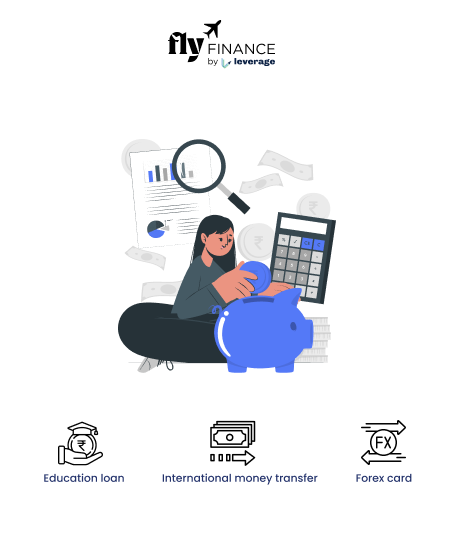Floating interest rates refer to interest rates that can change over time. It is not fixed and is typically tied to a reference rate, such as a benchmark interest rate or an index. The floating rate fluctuates periodically based on changes in the reference rate or other factors specified in the loan (education loan, home loan, personal loan, etc) or investment agreement. This means that the interest rate can rise or fall in response to market conditions or changes in the economy. Floating rates of interest provide flexibility but can result in varying interest payments for borrowers or returns for investors, depending on the changes in the underlying reference rate.
Floating Interest Rates Meaning
Floating interest rates, also known as variable interest rates or adjustable interest rates, are interest rates that can change over time. Unlike a fixed interest rate, which remains the same throughout the loan or investment period, a variable interest rate fluctuates based on changes in a reference rate, such as a benchmark interest rate or an index.
Variable interest rates are commonly used in financial products such as mortgages, loans, and certain types of investments. The interest rate typically consists of a reference rate, such as the prime rate or the London Interbank Offered Rate (LIBOR), plus a margin or spread determined by the lender or financial institution. The margin is a fixed percentage that remains constant, while the reference rate can change periodically.
When the reference rate changes, floating interest rates adjust accordingly. For example, if the reference rate increases, the variable interest rate will rise, resulting in higher interest payments for borrowers. Conversely, if the reference rate decreases, the variable interest rate will decrease, potentially reducing interest costs.
The frequency of rate adjustments varies depending on the financial product and the terms of the agreement. Common adjustment periods include monthly, quarterly, or annually. It’s important for borrowers and investors to be aware of the terms and conditions associated with variable interest rates to understand how their payments or returns may fluctuate based on market conditions.
It’s worth noting that the specific reference rate used and the rules for adjusting the variable interest rate can vary across different countries and financial institutions.
Advantages of Floating Interest Rate Education Loan
Floating interest rates can offer several advantages in the context of education loans. Here are some potential benefits:
Lower Initial Interest Rate
Variable interest rates for education loans often start at a lower rate compared to fixed interest rates. This can make the loan more affordable initially, especially for borrowers who plan to repay the loan over an extended period.
Potential for Interest Rate Reductions
These interest rates have the potential to decrease if the reference rate decreases. This can result in lower monthly payments and reduced interest costs over time. If interest rates are expected to trend downward, a floating-rate study abroad student loan can be advantageous.
Flexibility
Floating rates of interest provide flexibility for borrowers. As the interest rate fluctuates, borrowers can take advantage of falling rates by reducing their interest burden or increasing their loan repayments accordingly. This flexibility allows borrowers to adapt their repayment strategy based on their financial circumstances.
Early Repayment Benefits
Some student loans with floating rates may not have prepayment penalties. This means that if borrowers have the financial means to repay the loan early, they can do so without incurring additional costs. This can help borrowers save on interest expenses and potentially pay off their education loan sooner.
Potential for Long-Term Savings
While variable interest rates can increase over time, they also have the potential to decrease. If borrowers expect interest rates to remain low or decline in the long run, opting for floating interest rates can lead to cost savings compared to a fixed interest rate loan.
Also Read: Student Loan Debt: Relief, Application, Calculator, Plan
Calculation
Information Required to Calculate Floating Interest Rates
Calculating the interest on a variable-interest-rate education loan requires the following information:
1. Loan Amount: The total amount borrowed for educational purposes.
2. Floating or Variable Interest Rate: The initial interest rate charged on the loan, which is subject to change based on market conditions.
3. Reference Rate: The benchmark interest rate or index to which the floating rate is tied (e.g., prime rate, LIBOR).
4. Margin: The fixed percentage added to the reference rate to determine the floating rate.
5. Loan Tenure: The length of time over which the loan will be repaid.
Steps to Calculate Floating/Variable Interest Rate
To calculate the interest on floating interest rates education loan, follow these steps:
Step 1: Determine the Floating Rate of Interest
Calculate the floating rate by adding the margin to the reference rate. For example, if the reference rate is 4% and the margin is 2%, the interest rate would be 6%.
Step 2: Determine the Monthly Interest Rate
Divide the floating rate by 12 to obtain the monthly interest rate. For example, if the variable interest rate is 6%, the monthly interest rate would be 6% divided by 12, which is 0.5%.
Step 3: Calculate the Monthly Interest Payment
Multiply the monthly interest rate by the outstanding loan balance for each month. The outstanding loan balance is the loan amount minus the principal repaid in previous months. This calculation gives you the interest component of the monthly payment.
Step 4: Calculate the Monthly Principal Payment
Subtract the interest payment calculated in Step 3 from the total monthly payment to determine the principal payment.
Step 5: Repeat Steps 3 and 4 for each month over the loan tenure.
Update the outstanding loan balance each month by subtracting the principal payment made in that month. Then, repeat Steps 3 and 4 to calculate the interest and principal payments for subsequent months.
Step 6: Sum up the total interest paid over the loan tenure.
Add up the interest payments made over the loan tenure to determine the total interest paid for the education loan.
It’s important to note that this is a simplified calculation, and the actual interest calculation may involve compounding and additional factors based on the terms of the loan. Additionally, as the floating interest rates can change over time, the calculations may need to be adjusted if the interest rates fluctuate.
Also Read: Study Loan For Abroad Procedure In 2023
Examples of Financial Products that Use Floating Interest Rates
Here are a few examples of financial products that commonly use floating interest rates:
Adjustable Rate Mortgages (ARMs)
ARMs are home loans with interest rates that can fluctuate over time. The interest rate on an ARM is typically fixed for an initial period, such as 5, 7, or 10 years, and then adjusts periodically based on changes in a reference rate, such as the one-year Treasury Constant Maturity Rate or the LIBOR.
Variable Rate Student Loans
Some student loans offer floating interest rates tied to a reference rate, such as the prime rate or the LIBOR. The interest rate on these loans can change periodically, resulting in fluctuations in the monthly payment amounts or Equated Monthly Instalment (EMI).
Also Read: What Is Moratorium Period And How Does It Work?
Floating Rate Bonds
Floating rate bonds, also known as variable rate bonds or floaters, are debt instruments with interest rates that reset periodically based on a specified benchmark or index, such as the LIBOR. These bonds provide investors with the potential for higher interest income if the benchmark rate increases.
Floating Rate Certificates of Deposit (CDs)
Floating rate CDs are time deposits offered by banks that provide variable interest rates. The interest rate is usually tied to a reference rate, such as the prime rate or the LIBOR, and adjusts periodically.
Floating Rate Loans
Floating-rate loans, also referred to as variable-rate loans or adjustable-rate loans, have interest rates that fluctuate based on changes in a reference rate, such as the prime rate or LIBOR. These loans are commonly used for business financing or personal loans and allow borrowers to take advantage of potential decreases in interest rates.
These are just a few examples of financial products that may use floating interest rates. It’s important to note that the specific terms, reference rates, adjustment periods, and other features of floating interest rate products can vary depending on the institution, country, and specific agreement.
FAQs
A. Some of the advantages of this loan type include a Lower Initial Interest Rate, Potential for Interest Rate Reductions, Early Repayment Benefits, and Potential for Long-Term Savings.
A. Also known as a variable rate loan, a floating rate loan refers to a loan that has an interest rate that fluctuates based on changes in a reference rate, such as the prime rate or LIBOR.
A. Governments, corporations, and financial organizations issue floating rate notes or floaters for two to five years.
To learn more about study abroad education loan-related interest rates and other information, stay in tune with Fly Finance. Connect us at 1800 572 126 for all forex and banking services for global students.





























